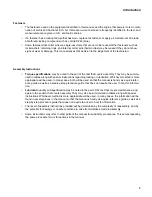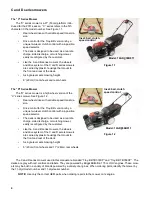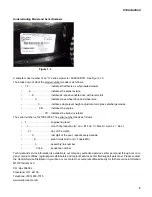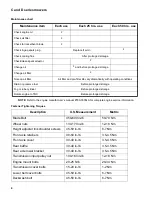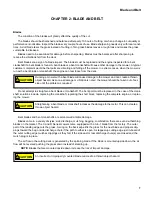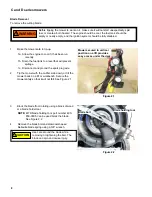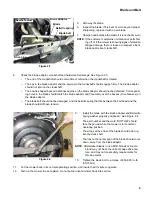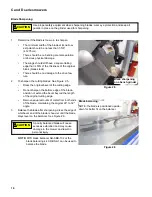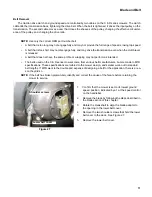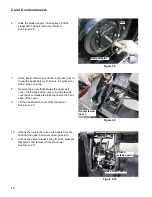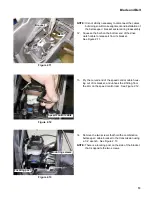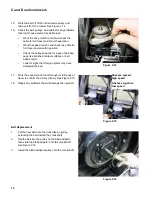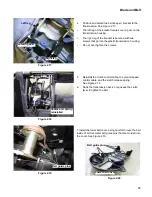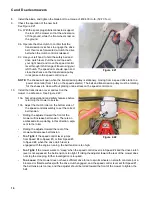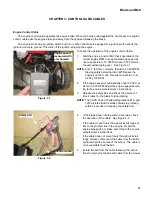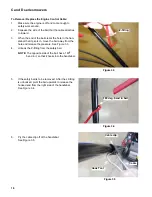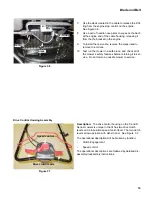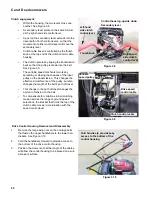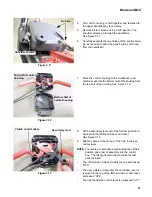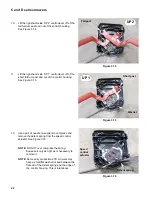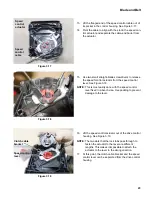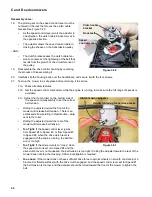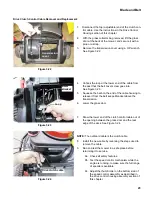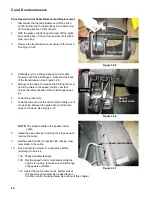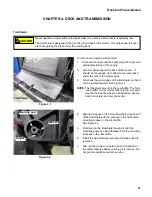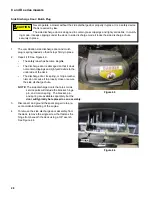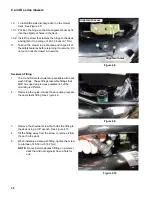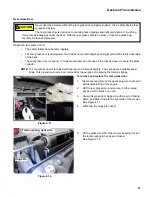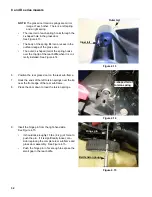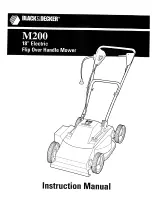
Blade and Belt
17
Engine Control Cable
The engine control cable operates the engine brake. When the bail is pulled against the handle bar, the engine
control cable pulls the engine brake pad away from the flywheel releasing the brake.
The engine brake has an ignition switch built into it. When the brake is engaged, the ignition switch shorts the
ignition module to ground. This turns off the ignition, stopping the engine.
To check the operation of the engine control Cable:
1.
Start the engine, and confirm that it operates at the
correct engine RPM to keep the blade tip speed as
near as possible to 19,000 ft./minute (5,790 meters/
minute) without going over. See Figure 3.1.
NOTE:
For 21” (53.3cm.) mowers, that limit is 3,458 RPM.
Staying safely below that limit, MTD specs the
engines on the C and D series mowers to run at
3,200 +100 RPM.
2.
If the engine speed is substantially under 3,200 or at
all over 3,200 RPM, adjust the engine speed accord-
ing to the engine manufacturer’s instructions.
3.
Release the safety bail, and check the amount of
time it takes for the blade to stop rotating.
NOTE:
The CSPC Code of Federal Regulations #16, part
1205 dictates that the blade should stop rotating
within 3 seconds of releasing the safety bail.
4.
If the blade does not stop within 3 seconds, check
the operation of the cable. See Figure 3.2.
•
If the cable moves freely throughout its full range of
travel, the problem lies in the engine. Repair the
engine stop-switch or brake according to the engine
manufacturer’s instructions.
•
If the cable does not move freely throughout its full
range of travel, disconnect the cable from the bail to
confirm where the source of the bind is. The cable is
more vunerable than the bail.
5.
Isolate the bail from the cable following the instruc-
tions for removing the bail and cable from the mower.
Figure 3.1
Engine speed
measured with
a tachometer
Figure 3.2
Safety bail
Control cable-
CHAPTER 3: CONTROLS AND CABLES

